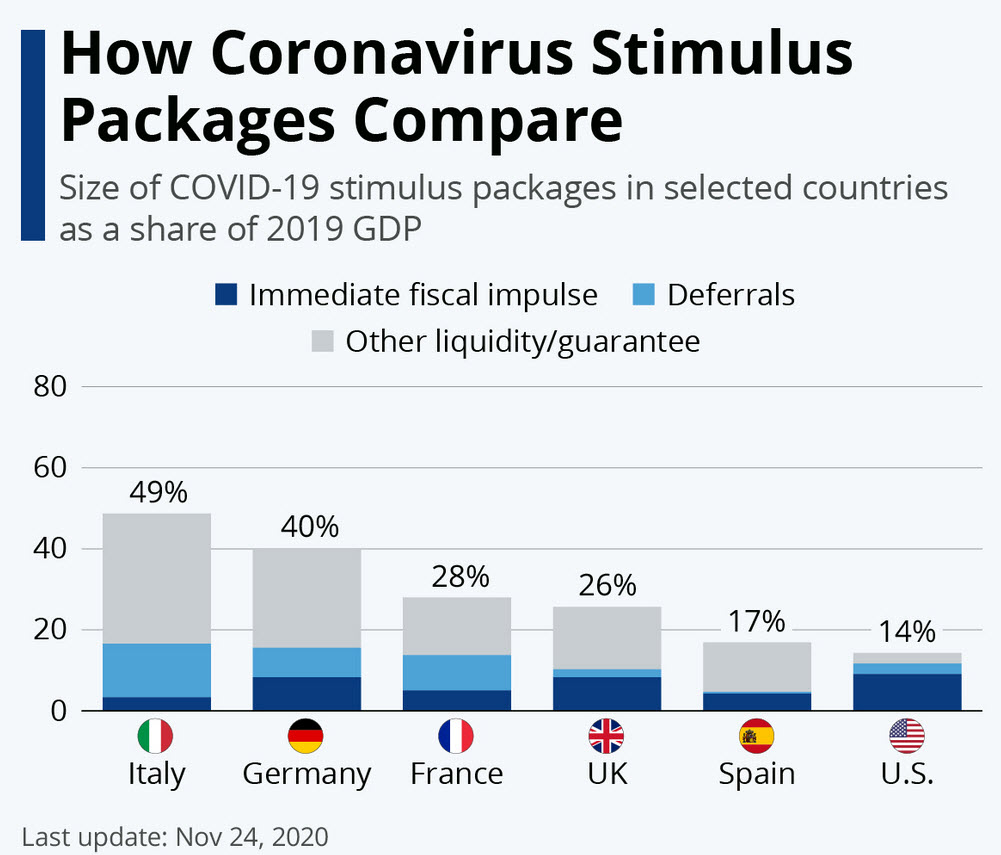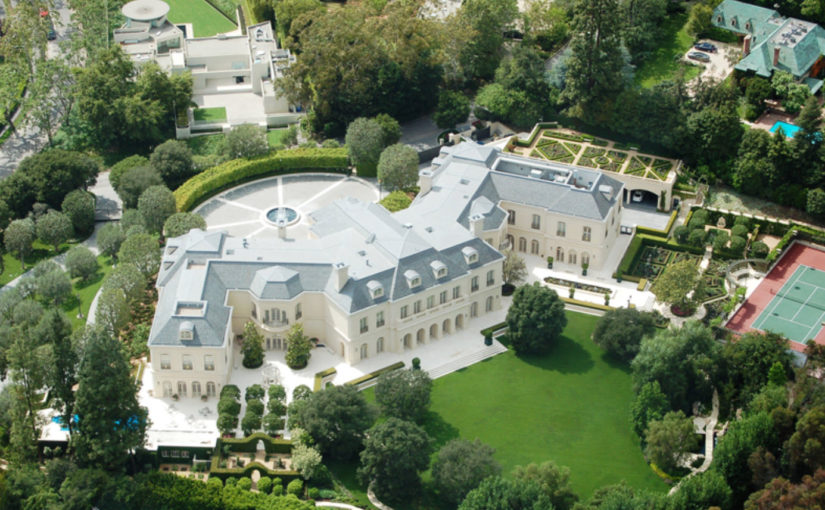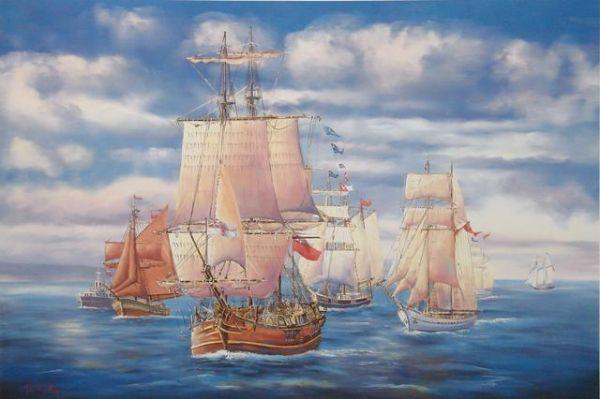Spoiler alert; America is the most pathetic of the bunch. But you all need not worry. Businessmen in Washington DC can now deduct their three-martini lunches from federal taxes. Dictators in Africa get billions of dollars, and there are decreased taxes for the super-wealthy. Aren’t you so very proud to be an American?
- COVID-19 relief bill features ‘three-martini lunch’ tax …
- White House secures ‘three martini lunch’ tax deduction in …
- ‘It’s unconscionable’: Outrage over the ‘three-martini …
- What’s in the U.S. COVID-19 aid bill? Unemployment, …
While the world is reeling from the pandemic, the oligarchy toiling away in Washington DC have been using this pandemic to push for structural changes to the tax code. Many of the changes are stealth changes. Changes that have been been implemented silently over the last four decades or so. All of which is tax the poorer, working level citizenry, while providing benefits and tax relief to the wealthier people.
- Greater taxes on the vast bulk of citizenry.
- Less taxes on the higher social-economic citizens.
This is pretty well understood, if not at all reported.
And now, in the midst of a serious emergency; a global pandemic that America has completely bungled (politely stated, America has truly FUCKED UP on this issue), the oligarchy have been focused on making taxpayers subsidize lavish lunches for wealthy executives.
And their work has paid off in the latest Covid relief deal. Buried in the details of this modest aid plan is a provision to give executives unlimited tax deductions for their business meals for two years.
No. Not enough money to pay rent. (The last time my rent was under $600 was in the 1980’s.)
No. There isn’t any free treatments or hospital services if you get the coronavirus illness, like the FUCKING REST OF THE WORLD. You have to pay for the medical service out of your own pocket.
But this idea of giving extra benefits is pretty much the “old normal”. A normal that pre-dated the Ronald Reagan Presidency.
That’s how it worked back in the 1970s, when Presidential candidate George McGovern had this to say about it: “There’s something fundamentally wrong with the tax system,” he said, “when it allows a corporate executive to deduct his $20 martini lunch while a workingman cannot deduct the price of his bologna sandwich.”
"There’s something fundamentally wrong with the tax system when it allows a corporate executive to deduct his $20 martini lunch while a workingman cannot deduct the price of his bologna sandwich." -George Mcgovern
President Ronald Reagan, of all people, actually agreed with McGovern. His 1986 tax-code overhaul, best remembered today for lowering overall rates, reduced the deductibility of business meals from 100 to 80 percent. In 1993, the Clinton administration pushed that deductibility rate down to 50 percent, where it has stayed ever since.
- A Look Back At The 1986 Tax Overhaul : NPR
- Tax Reform Act of 1986 | United States [1986] | Britannica
- Twenty Years Later: The Tax Reform Act of 1986 | Tax …
- What is the Internal Revenue Code of 1986? (with picture)
Now corporate lobbyists have managed to restore that 1970s-era perk – claiming, of course, that bigger tax write-offs for business meals would help struggling restaurants and the people they employ. It’s a real stretch. But those in Washington DC live in their own bubble of reality.
This argument that giving deductions to the activities of the upper-class would “trickle down” to the working-level folk has been proven to be a fallacy. Yet, it was used in the opposition to the Clinton-era tax reform. It was flawed then and it’s even more preposterous now.
Hey! Do you want to help the people working in the restaurants? Really? Then how about stop taxing tips.
Duh!
Which solution would best serve waiters and waitresses? [1] Allowing the patrons to have tax deductions for their business lunches and alcoholic beverages. [2] Stop taxing the tips that the waiters and waitresses get.
Today, when the real problem is a public health crisis that’s keeping people at home. The justification that lowering taxes on business meals will do anything to help struggling restaurant owners and employees is just bullshit.
This is not a true relief package. Relief would mirror the economic response of other western industrialized nations, where working people either receive regular monthly payments or are guaranteed up to 80% of their pre-Covid income. A real relief bill would have canceled mortgage and rental debt. Real relief would have included the expansion of Medicare and Medicaid to cover all medical debt resulting from the crisis. Congress knows that the bill won’t solve the problems of a household facing upwards of $6,000 in unpaid rent. They just hope it’s enough to distract from the utter lack of care and compassion that they have shown to people.
In this time of crisis, any support for corporations should encourage executives to treat their workers well, trim their own fat paychecks, and pay for their own lunches.
It’s never going to happen though. No one ever listens to me.
Why are we not surprised that the peons will get a one time check for $600, but a billionaire CEO will get to write off his $600 “business lunch” each and every day, all year long. You know, I can’t help but figure that this was thrown in for one reason, and one reason only. A giant middle finger to the working class. A quick brutal reminder that they indeed own the political class, and they are in charge.
That the stratification of America into a caste system, along the lines of India, is in process and there is nothing that Americans can do about it.
How do we know?
That’s a pretty damning statement. How do we know that is this the case?
Well, if you compare how citizens are treated around the world by their governments during this global pandemic, you can see this all quite clearly.
In nations that have governments that care for their citizens and take on the role of protectors and actuators, you can see that there are very large outlays given to the citizenry. But in nations that have either a very repressive government, or that possess one that is socially stratified (either officially or unofficially) they pretty much resemble America.

.
The U.S. has passed a third stimulus bill Monday night and an international comparison shows that it has been high time. According to an analysis by think tank Bruegel, the U.S. is the country currently offering a much lower level of coronavirus financial aid and stimulus than other developed nations. The bill's $900 billion in aid will up the level of stimulus from previously 14 percent (of 2019 GDP) to approximately 18 percent. While that will still leave the U.S. at the lower end of the comparison, the country's share of immediate fiscal impulse is higher than elsewhere. Since cash checks for citizens are once again included in the new bill, the high level of immediate spending will likely remain the same after the new bill is entered into the Bruegel calculation, which has last been update on Nov 24, 2020. April's checks for $1,200 to all Americans in a certain income bracket came to US$600 billion, the biggest single item in the entire stimulus package, which consisted of almost $2 trillion in direct stimulus and $560 billion each in deferrals (of payroll tax and student loans) and in liquidity/guarantee measures.
All the details
Yeah. All the details are available on the internet. Though you would be hard-pressed to find them in any American “news”. If you want to check out the details, you can find a pretty comprehensive listing at the (American based) Tax Foundation.
For the most part, except for the United States and India, most (but not all) nations follow the following guidelines…
- Tax relief should be broad-based.
- Tax relief should be in keeping with good long-term policy.
- Using refundable tax credits designed for future credits.
- Repair distortive tax policies that could impede recovery efforts.
Compared to America, most other nations are very generous. Even if they are tiny, or are short in resources.
Consider Australia as an example…
Australia Coronavirus Tax Relief
Australia has announced federal relief proposals that total around $320 billion (AUD). State governments have also announced relief packages and in some cases deferrals of payroll tax payments (Australian Capital Territory, Queensland, Victoria, Western Australia).
The federal relief package includes direct payments to citizens. For job seekers impacted by the downturn, there will be payments of $550 every two weeks in addition to current income support payments. The government expects these payments to cost $14.1 billion. There is also a broad-based, $750 one-time payment to eligible recipients—this is expected to cost $4 billion. Individuals will also be able to temporarily access up to $10,000 from certain retirement accounts.
Through a new wage-subsidy scheme, employers will be able to receive a $1,500 payment per retained worker every two weeks. Businesses qualify for the subsidy if their revenues have fallen by 30 percent (50 percent for businesses with revenues greater than $1 billion) in the relevant time period relative to a year earlier. The subsidy will be in place for six months.
The aid packages provide relief to businesses through subsidized loans and central bank lending, and temporary relief from insolvency laws, immediate expensing (instant asset write-off), and accelerated depreciation.
Immediate expensing will now be available for assets costing less than $150,000 on a per-asset class basis. Eligibility is expanded to include businesses with annual revenues of less than $500 million (the current cap is $50 million). This measure applies until the end of June.
Accelerated depreciation will be provided temporarily for businesses with less than $500 million in revenues. In addition to current depreciation deductions, the policy allows an additional 50 percent deduction but only applies to assets purchased after March 12, 2020 and put into service by June 30, 2021.
Businesses subject to the Goods and Services Tax (GST) can apply for deferred payments if they are facing cash-flow challenges. Also, businesses that receive credits or refunds under the GST can switch from quarterly to monthly filings to speed up their refunds. Importers may also apply for the deferred GST scheme.
Two states—South Australia and Western Australia—announced land tax relief for landlords who have provided rent relief to tenants in response to the coronavirus outbreak.
Australia makes America look really, really bad.
It really does.
But you know what? It’s not just Australia. It’s just about every nation on the planet. And while there are certain differences between each and every plan, most nations are putting relief efforts for the day-to-day working-citizens of their nations FIRST, with consideration for the wealthy LAST, if at all. Not so in the United States.

.
For I have been saying that the American “benefit package” is along the lines of what India has. It is a stratified system of benefits where the wealthiest get the most support, and the rest of the citizenry get token relief.
- Wealthy get the greatest benefit from the “Coronavirus relief legislation”.
- Average people get little relief, or token benefits.
So…
You don’t believe my narrative, eh? That this is a fundamental principle of stratified communities. Well…
Let’s look at India…
India Coronavirus Tax Relief
India has provided a fiscal support package of 150 billion rupees focused on the health system’s response to the outbreak. State-level fiscal support has also been announced. Tax filing has been postponed from March 31 to June 30 for income tax returns and goods and services tax returns. There is also a reduced interest rate for tax payments made by June 30, and late filing penalties are waived. Goods and services tax (GST) deadlines for March, April, and May are extended to the end of June.
India is also working on a relief package for the airline industry including deferring aviation fuel tax. Refunds for Goods and Services Tax and customs duties will be accelerated. Companies’ income tax refunds up to INR 500,000 will be accelerated. Deadline extended for FATCA and CRS returns from May 31 to June 30. The deadline for March’s provident fund contributions has been extended from April 16 to May 15.
But what does this matter?
You know, you all can slice and dice the data any which way that you want. You can make a pile of dog shit smell like roses if you want, and I am sure that there are many people in the MM audience that might think that I am too “salty” on this matter. That “America is number one and the best”, and yada, yada, yada…
My argument is rather simple.
- Nothing shows how absolutely stratified the United States has become, than the comparisons in Coronavirus relief measures globally.
- The only nations that share in the same type of American-style relief programs are those representative of severe social stratification. Like India.
And if you don’t want to believe it, that’s just fine.
Americans know this
You might not want to believe this, but most Americans (today) realize that the nation is a private club and they ain’t in it. There are two sets of laws, two sets, of rules, two sets of living areas, and two sets of people.
- What Are Some Ways In Which American Society Is Stratified …
- America Is Even More Unequal than It Seems – Inequality.org
- How is America Stratified Today? by Joshua Lindsey
- What are some ways in which American society is stratified …
- How Is America Stratified by Caitlin McGrew on Prezi Next
- How is America Stratified Today? at The Lowell Whiteman …
- Social Stratification in America – EzineArticles
It’s just that most do not want to face the ugly truth.
So they fight back. You know, like sheep baa-ing in their pen, or monkeys howling in their cages. Modern Americans protest using meme’s. Most are far too timid to do anything more aggressive than that.
American protest memes
Here’s some “protest” meme’s regarding the grandiose coronavirus relief plan…














Seems strange – right?
Yes. Non-Americans won’t really understand the meme’s. So let me put this in perspective…
Here is some comparative data from the Zumper National Rent Report: December 2020. And keep in mind the following;
- Most American live in 2 to 4 bedroom homes.
- Those that do not rent, have a mortgage that has typically much larger monthly payments.
Combined means that the data is damning.
Why?
Because Congress has this information, and already knows this.
Knows what?
This…

.
Which pretty much means that, for a nation where…
- Most citizens live paycheck to paycheck.
- Most citizens have no savings.
Will result in most citizens at a point of eviction from their homes, with little compensation, no savings, no cushion, and ZERO support from the American government.
This is setting up a “perfect storm”.
A perfect storm
It appears that the long-awaited “fork in the road” has arrived. Americans can either accept the role as destitute indentured-serfs or they can revolt against an uncaring, inefficient, and criminal government.
And maybe it is already happening….
A perfect storm is brewing.
You have [1] a “clueless”, psychopathic American leadership, supported by [2] selfish minions that have [3] become blatant in their treatment of the 99% of the rest of America. You have [4] an oligarchy that is trying to create strife and discord for the sole purpose in obtaining personal advantage. [5] You have a completely disillusioned serf-citizenry that is [6] waking up to their reality, while [7] the government controls all the media that is fed to them, and [8] a government desirous of sparking a violent “hot” war in a “distant land” to unify the [9] balkanized Americans for a common goal.
And no one wants to do the “hard stuff”.
“Hard stuff” ?
Yeah. The “hard stuff” as described in this lengthy article (shown below) and pointed out at the end…
Across the political spectrum, there is widespread agreement that America must get serious about the threat posed by China. As the Trump administration comes to a close, the State Department has just released a document called ‘The Elements of the China Challenge’. A distillation of conventional wisdom among national security experts and government officials, it argues that the U.S. needs a concerted effort to push back against Beijing. On its first page, the document tells us that “the Chinese Communist Party (CCP) has triggered a new era of great-power competition.” If there was a major intellectual thread running through Trump’s foreign policy, or at least that of the people he appointed, it was that confronting China was the national security issue of our time. America during the Trump era was single-minded in its focus on turning up the pressure on Beijing, including unprecedented support for Taiwan, sending ships more often through the South China Sea, and attempting to stop the spread of the telecom giant Huawei. The idea of the China threat will not end with the Trump administration. Michèle Flournoy, once thought to be the frontrunner to become Biden’s Secretary of Defense, argued in Foreign Affairs that the U.S. has not been steadfast enough in its military commitments in East Asia. Sometimes, great power competition is presented as an imperative of history; in the formulation of Graham Allison, a former Pentagon official and the current professor at Harvard’s Kennedy School of Government, the two powers are involved in a “Thucydides Trap.” Looking at the last 500 years of world history, Allison believes that when the ambitions of a rising power conflict with those of an established power, war becomes likely. But what are we afraid of China actually doing? Reading foreign policy analysis can often be frustrating to those who believe arguments should proceed in a straight line, with clearly defined terms, and logical connections between ends being sought and the means being recommended. Once can read op-eds and government reports on “great power competition” or the “China challenge” and never understand clearly what the U.S. and China are actually competing for. ‘The Elements of the China Challenge’ from the State Department adopts a strategy of throwing everything at the wall and seeing what sticks, accusing China of everything from being too successful in trade, to trying to dominate the world, and being racist against African migrants. This kind of ambiguity about what a conflict is actually about has not existed throughout most of history. The two world wars nominally centered around rivalries between Germany and its neighbors over specific territories one could locate on a map, such as Alsace-Lorraine. The Cold War was a struggle between the capitalist and communist systems. But why, exactly, are the U.S. and China rivals? Beneath the comparisons to any number of classical or modern conflicts, the reality is very different. China is not a threat in the way traditionally understood. There is nothing vital to American security or prosperity that China threatens. While the U.S. will be less powerful in the coming decades in relative global terms, that is inevitable with the rise of the developing world more generally, a trend Washington has encouraged. China’s true menace is neither military nor geopolitical, but rather ideological. Its continuing success, even if it in no way harms the prosperity or security of most Americans, poses a major threat to the American political establishment, how it justifies its own power, and its understanding of the U.S. role in the world. What is the China Threat? In the last three decades, China has experienced a rate of economic growth unprecedented in modern history. Between 1990 and 2019, GDP per capita increased 32 times. In terms of total GDP, China may become wealthier than the U.S. in the next two decades—and by some measures, already is. For the sake of comparison, in 1980 the Soviet Union had a GDP that was about 40% that of the U.S., with the trendlines actually favoring the West. Recently, when the economist Branko Milanovic suggested that the Nobel Prize in his field should go to scholars who study the most important questions out there, he pointed to Chinese growth as an example, calling it “40 years of the most extraordinary increase in income for the largest number of people ever.” This would be frightening if the U.S. and China coveted territory from one another. Azerbaijan’s recent military victory over Armenia in the conflict over Nagorno-Karabakh can be attributed to the former growing economically, and therefore militarily, stronger than the latter over the last two decades. Yet the two modern superpowers are on opposite sides of the world and have no similar dispute between them. It is true that the U.S. seeks to preserve the territorial integrity of allies and partners, such as Taiwan and Japan, that may be threatened by Beijing. The incoming Biden administration will likely have a policy of willingness to defend the Senkaku Islands, an uninhabited five rocks and three reefs that the U.S. considers part of Japan. But why America should risk nuclear war over this issue is rarely explained. To the extent such objections are addressed, they are buried under appeals to morality that forgo any kind of cost-benefit analysis, and buzzwords such as preserving an undefined sense of American credibility or the broad goal of reinforcing deterrence. Another idea, popular among pundits and the general public, is that Chinese growth is necessarily bad for the U.S. But in reality, Chinese growth has so far directly benefited U.S. consumers: it is undisputed among economists that trade with China made America better off by lowering the price of goods. Despite the temptation to political amnesia, the fact is that U.S. policy privileged these economic gains for many years, and its relationship with China was explicitly informed by these political decisions. While this has undermined U.S. economic capacity in important ways, the cause wasn’t cheating, trickery, or even growth on the part of China. Instead, the cause was the success of American policy priorities. If there is a problem, it is most immediately that those priorities were misguided. The U.S. has the right to conduct trade on its own terms. It can choose what kind of strategy it wants in trade negotiations, and is free to deal with the downsides of neglecting domestic industry and increased competition for jobs through whatever means it considers appropriate. To see China as a civilizational enemy over such issues, however, is bizarre. The same is true regarding IP theft. While the practice has been estimated to cost the U.S. hundreds of billions of dollars a year, it is nonetheless normal for developing economies, with South Korea and Taiwan having had similarly bad records as their economies began to grow. No other state was considered a fundamental threat to the U.S. over the issue, with a mix of external pressure and internal incentives leading them to ultimately develop more rigorous patent laws and enforcement. Many corporations, the parties most directly affected, treat the problem as the price of doing business. Perhaps, then, the threat is that China seeks to remake the world in its own image? This is a popular trope among the national security establishment. H.R. McMaster, perhaps the quintessential representative of this class, says China is “leading the development of new rules and a new international order that would make the world less free and less safe.” When one scratches the surface of these arguments, it is clear that most of the indictment against China involves things that every country does, but only looks frightening if you completely ignore American behavior. Chinese loans to poor countries are said to trap them in debt, but the evidence doesn’t bear this out. The same criticisms don’t often extend to the sorts of loan programs offered by the International Monetary Fund, even though these have often been as controversial as, and much more comprehensive than, any Chinese financial aid. But despite the growth of this position among the American establishment, still others accuse it of strategically respecting the sovereignty of other states. In March, Daniel Tobin of the Center for Strategic and International Studies testified to Congress that China continues to promote the normative principles of “mutual respect for each other’s territorial integrity and sovereignty, mutual nonaggression, mutual noninterference in each other’s internal affairs, equality and cooperation for mutual benefit, and peaceful coexistence.” Ted Piccione of the Brookings Institution writes of China under Xi putting forth “orthodox interpretations of national sovereignty and noninterference in internal affairs…” While China is not blameless, one could reasonably make the argument that, from an international perspective, it has had easily the most peaceful rise to great power status of any nation of the last several hundred years. While China has carried out the re-annexation of Tibet, blockaded Taiwan diplomatically, and launched internal colonization of territories like Xinjiang, such actions always occur under the ideologically important claim that they are internal to China. The U.S., conversely, undertook external colonial ventures during its rise and still regularly sanctions unquestionably sovereign nations. China’s territorial claims are naturally controversial internationally, but are modest compared to those sought by other powers—not least the U.S. itself, which early in its history declared the entire Western Hemisphere as off limits to the nations of Europe. Its interventionist policies since then have led to the overthrow of governments, the killing of leaders, and the economic sanctioning of entire nations. Perhaps, as the McMasters of the world claim, this is all because Beijing is biding its time in hopes of world domination. Alternatively, China may be an inwardly focused civilization that, while it may have disputes with its neighbors, is not on a mission to fundamentally remake the world. While it would naturally prefer rules that favor it and resists any principles that would legitimize regime change supported from abroad, Beijing does not seek to fundamentally replace the U.N. or rewrite international law. Its strategy has mostly sought stability and growth within the rules of the system developed by Western democracies in the aftermath of the Second World War. While its current position of strength is recent, it has not yet broken from this precedent. This interpretation is most consistent with past behavior and, given the costs of American militarism abroad, with common sense about how a rational actor should be expected to act. It is also consistent with the arguments of the most honest kind of “China hawk,” who argues that the real problem with Beijing is not that it wants to dominate the world, but that it might stop the U.S. from doing so in a unipolar manner. The Threat to the National Security Elite Given the incoherence of these arguments, one must look below the surface to see what motivates political hysteria towards China. To understand the motivations of analysts, think tank fellows, and generals, one must comprehend how they see themselves and the American role in the world. For decades, the ideology of the American government in its dealings abroad has been based on the necessity of creating a liberal democratic world—a necessity which, as the Soviet model proved an ineffective threat and the Cold War ultimately ended, became seen as ever more natural. The assumptions supporting this view have, in various ways, driven American leaders since the post-WWII era. The collapse of the Berlin Wall increased this confidence. While the possibility of nuclear war had to be managed, and it was assumed that communists might hold on to their captive populations indefinitely, the spread had been contained. During the entire Cold War, the trend was towards more democratic governance and the opening of markets. The 1990s saw the U.S. engage in what can be described as mop-up operations against the few holdouts against the trend towards democratic capitalism like Saddam Hussein and Slobodan Milosevic. Academics even before Francis Fukuyama saw democratization as a natural consequence of people demanding more of a voice in their governments, as incomes rose, and as they became more educated. Countries like Chile, South Korea, and Taiwan seemed to validate this view. None of this meant that the U.S. was to stand back and let history unfold. An expansive military presence abroad was necessary for all these projects, and even after the Cold War to address WMD proliferation and protect civilians abroad from human rights violations, and to stop Islamic terrorism after 9/11. The assumption was that, while the move towards democratic capitalism was natural and maybe even inevitable, it could be delayed by communists, terrorists, or Baathists if the U.S. did not lead. The result was a paradox. The greater the inevitability of this grand historical arc, the more urgently it had to be backed up by force, and the more unreasonable and deviant all resistance seemed. Even the language of a “clash of civilizations” as the War on Terror commenced did not radically depart from the larger story. This justified a large military establishment with costs that dwarfed those of every other potential rival combined. American global leadership was pushing on an open door. China Versus Western Political Science China is something completely new. The Soviet Union had military power and appealed to Western intellectuals, but was clearly an economic basket case that could not deliver on its promise of rising standards of living. Islamic terrorists could kill Westerners and destabilize countries, but had little overall effect on American security, and did not threaten either U.S. hegemony or its justifications. Modern day Russia can seek to have an influence on our culture and politics, but nobody looks to it as a model, and it nominally accepts the legitimacy of competitive elections. China, however, rejects liberal democracy—the idea that leaders should be chosen on a one-person, one-vote basis—even as an ideal or ultimate destination. As Daniel Bell explains in The China Model: Political Meritocracy and the Limits of Democracy, Chinese leaders have implemented a system in which government officials are selected and promoted based on examinations, performance reviews, and the meeting of objective criteria at lower levels. Its political qualification is not electoral support, but party membership and loyalty. This system is not justified on the grounds simply that the Chinese people or their institutions are “not ready for democracy,” a line sometimes taken even by Middle Eastern dictators like Bashar al-Assad. Critiques of democracy certainly are not foreign to the West; Plato is possibly the most famous anti-democratic thinker in history, and today modern skeptics use the language of economics when they talk about concepts like the influence of interest groups and the “rational irrationality” of voters. Yet opposition to the principle of democracy as such is unthinkable for an American leader, and even for most prominent intellectuals. What went wrong with political science models that generalized from a moderately large number of cases in which economic growth led to democratization? To see how they erred, one could imagine a social scientist at the end of the first millennium arguing that the whole globe would become Christian because princes across Europe had all adopted that religion. If statistical models existed then, one could have done a regression and “proved” this hypothesis. The most common statistical models used today rely on the assumed independence of observations. The logic of regression analysis and hypothesis testing as applied to political development says that if we see the same patterns across time and space, then we may be able to infer a causal chain of events. But the spread of economic and social systems operates in the realm of path dependence and network dynamics. Under this view, the move towards democratization after the Second World War depended on the power and missionary zeal of the U.S. more than the laws of history. If American power declines, its focus on world affairs wanes, or democracy loses its luster due its perceived shortcomings, the connection between economic growth and democratization can break down. China is not simply passing the U.S. in overall GDP. Other measures one might use to measure the health of society also indicate that leaders in Beijing have been doing a better job than those in Washington in recent years. Are dictatorships more conflict prone at home? China’s murder rate is a fraction of that of the U.S., and the country has practically none of the rioting and political violence Americans have gotten used to. Are dictatorships more likely to menace countries abroad? China has not been to war since 1979, while the U.S. has been at war almost every year since that date. Are dictatorships less innovative? In 2020, China passed the U.S. in publications in the natural sciences, and its children score higher than American students on IQ tests and international standardized exams. While in 2008, the U.S. recorded over 16 times as many international patents as China, already by 2018 the gap had shrunk to 2.4 times as many, with trend lines indicating that China could surpass the U.S. before long. With the American post-war liberal consensus having staked much of its legitimacy on providing better results, China’s development is an ideological threat regardless of how benevolent its rulers might theoretically be. American elites can tolerate a more successful system on a smaller scale. Lee Kuan Yew, the founder and long-time leader of Singapore, was explicitly anti-democratic, and horrified American elites with stances like his belief in eugenics. Yet his nation’s population has never even approached that of the largest American cities, and Lee was happy to geopolitically align his country with the U.S. China’s ideology, and the success it is achieving, is ultimately threatening because of its size. Of course, as a country moves from Third World status to the most powerful nation in the world, it should be expected to become more geopolitically confident. Recently, China has begun asserting its will in a century-old border dispute with Bhutan, a country of 800,000 people, after 24 rounds of previous talks. Such results in this dispute and others like it are inevitable. So, what question should American leaders be asking? It is not whether China will become more powerful, which it certainly will, or whether it will democratize, which is out of American hands and not relevant to its security anyway. Rather, it’s whether China has ambitions beyond what the U.S. can live with. All else equal, a few rocks in the South China Sea are not worth the possibility of war, or even worth forgoing the benefits of trade and potential collaboration on issues of global importance like climate change and containing pandemics. In that case, what about Chinese financing? What about IP theft? What about Taiwan? Rather than invoking concerns about ethereal leadership or precedent, it would behoove American leaders well to explicitly set out their red lines, and tie their arguments for action to why crossing them threatens America’s fundamental interests. This also requires honesty about why certain actions are provoking concern. If the real worry is ideological, it should not be cloaked in rumors about predatory debt. The answer to the China question would therefore be easier if American leaders were simply looking after the economic or security interests of the nation, or even the concrete concerns of a formalized alliance. Unfortunately, they also have financial, bureaucratic, and ideological reasons for being opposed to China’s rise. If universal democratization is not the ultimate endpoint of history—or even an imperative for development, peace, and prosperity—how can the American role in the world be justified? What will it say about the American system if the U.S. is no longer the wealthiest and most powerful nation in the world, having been surpassed by a country that became the dominant power in East Asia without even paying lip service to democratic ideals? Ultimately, Americans themselves might begin asking themselves difficult questions about how well they have been served by their own system, including the sacrifices in blood and treasure they are regularly asked to make abroad. How Will the U.S. Manage Its Decline? The rise of China is based on long-term economic trends. Washington can no more stop or contain it than European powers in the mid-twentieth century could hope to hold on to their colonies in the midst of population growth in Asia and Africa, the rise of mass media, and their national declines relative to the U.S. and the Soviet Union. American leaders debate questions such as whether to reduce trade with China, call Beijing out on human rights violations, ban apps like TikTok, or undertake more naval missions through the South China Sea. Even if the hawks get their way on each of these issues—like they did under Trump and are unlikely to under Biden—none of these policies are going to significantly impede the rise of China. At present, Beijing has demonstrated no desire for territory far from its borders; nor does it seem to want veto power over what governments do in distant lands, as the U.S. has exercised over large swaths of the world. Chinese leaders have always reasonably acted as if such entanglements are not worth the cost. While we cannot predict what future opportunists may attempt, it would be a mistake to craft our approach to the Chinese relationship as if this was not the case. Understanding this, perhaps the most important question becomes the extent to which the U.S. is to play a game of chicken in the South China Sea. This is the real Thucydides Trap, though the concept only applies if both sides consider hegemony in an area important. China has built an impressive collection of fortified artificial islands in the South China Sea that will be useful in any dispute in Taiwan. Nonetheless, an all-out invasion is unlikely. Rather, Chinese economic strength should be enough to make most countries of the region take its side in any disputes and isolate Taiwan. At that point, various scenarios are imaginable, from an indefinite continuation of the status quo, to overwhelming economic pressure and attempts to force the island nation into submission, to a blockade or invasion. Only the very last of these risks war with the U.S. Assuming we avoid such a scenario, American leaders can be expected to easily forget about Taiwanese independence and democracy and move on. Recent events in Hong Kong and Belarus demonstrate the limited nature of U.S. commitments to faraway nations most Americans know little about. Over the last two years, both of these places have seen pro-democracy protests that were given rhetorical support by the United States. In both situations, authoritarian governments were able to reassert authority and hold on to power. In the aftermath, the U.S. puts sanctions on the guilty parties, but the issue recedes from the headlines, and things go back to normal. Just as America lost interest in Tibet, it will eventually lose interest in Hong Kong and the Uighurs. This quiet decline in the Asia-Pacific influence is the most likely scenario, even if the same military commitments remain. The U.S. can keep troops in Japan and South Korea as long as those two countries agree to host them, especially since China is unlikely to force this issue in the near future. Despite relying on the U.S. for defense, South Korea already aligns with China over the U.S. on a host of important geopolitical issues, from welcoming Huawei as a 5G provider to accepting the view of Hong Kong as an internal manner. Should political winds change direction in Japan, U.S. bases will not do anything to prevent better relations between Tokyo and Beijing. Just last month, China and Japan joined 13 other nations to sign the Regional Comprehensive Economic Partnership, a free trade agreement that will expand trade and cooperation throughout the Asia-Pacific. Nothing about the American military presence prevents the region from resisting any attempts to isolate China. Ultimately, the danger for American elites is not that the U.S. may become less able to accomplish geopolitical objectives. Rather, it is that more Americans might begin to question the logic of U.S. global hegemony. Perhaps not every state is destined to become a liberal democracy, and nations with very different political systems can coexist peacefully, as many countries in East Asia do. Maybe the U.S. will not always be at the frontier of military and economic power, and the country that overtakes it may have completely different attitudes about the nature of the relationship between government and its citizens. While most Americans will never experience a ride on a Chinese bullet train and remain oblivious in differences in areas like infrastructure quality, major accomplishments in highly visible frontiers like space travel or cancer treatment could drive home the extent to which the U.S. has fallen behind. Under such conditions, the best case scenario for most Americans would be a nightmare for many national security and bureaucratic elites: for the U.S. to give up on policing the world and instead turn inward and focus on finding out where exactly our institutions have gone wrong. -Richard Hanania is the President of the Center for the Study of Partisanship and Ideology and a research fellow at Defense Priorities. He holds a PhD in political science from UCLA and JD from the University of Chicago. He tweets @RichardHanania.
Yes.
The article is comparative. And that comparison is damning.
America has long, long past the time needed to restructure it’s failing and corrupt institutions. It has long past the time when the “policing elements” of “democracy” (such as the media) have become corrupted to the point where they are no longer functional. It has long past the time when the American Military Empire needs to be scaled back…
…firstly wind back 20 years to just an oligarchy…
…then wind back 40 years to just a “federal democracy”…
…then wind back 100 years to a “democracy”
…then wind back 100 years again to go back to a republic…
…then on to individual fully autonomous States…
…but you know…
…that isn’t going to happen. At least not peacefully. Abrupt change is required at this late stage “in the game”. The cancer has metastasized. It’s eating the host and it is on life-support.
Someone needs to pull the plug…
…press the reset button…
…perform a CTRL – ALT – DEL…
…and reboot.
You all know this, right? You know that the roller coaster has no brakes, and that it is careening out of control on a shoddy track, rotten by termites, broken in places, and run by drunk madmen.

Conclusion
I would be very surprised if any of this is new to you the reader.
What I am just doing here is something that you will not see in the American news. NO alternative media, mainstream media or anyone else is comparing the American ‘stimulus” packages with the rest of the world. Only here. And the comparisons are damning.
Just horrific.
Do you want to see similar posts?
I hope that you found this post curious. Please take care. You can view other similar posts in my SHTF Index, here…
SHTF ArticlesArticles & Links
You’ll not find any big banners or popups here talking about cookies and privacy notices. There are no ads on this site (aside from the hosting ads – a necessary evil). Functionally and fundamentally, I just don’t make money off of this blog. It is NOT monetized. Finally, I don’t track you because I just don’t care to.
- You can start reading the articles by going HERE.
- You can visit the Index Page HERE to explore by article subject.
- You can also ask the author some questions. You can go HERE to find out how to go about this.
- You can find out more about the author HERE.
- If you have concerns or complaints, you can go HERE.
- If you want to make a donation, you can go HERE.
Please kindly help me out in this effort. There is a lot of effort that goes into this disclosure. I could use all the financial support that anyone could provide. Thank you.

















































































